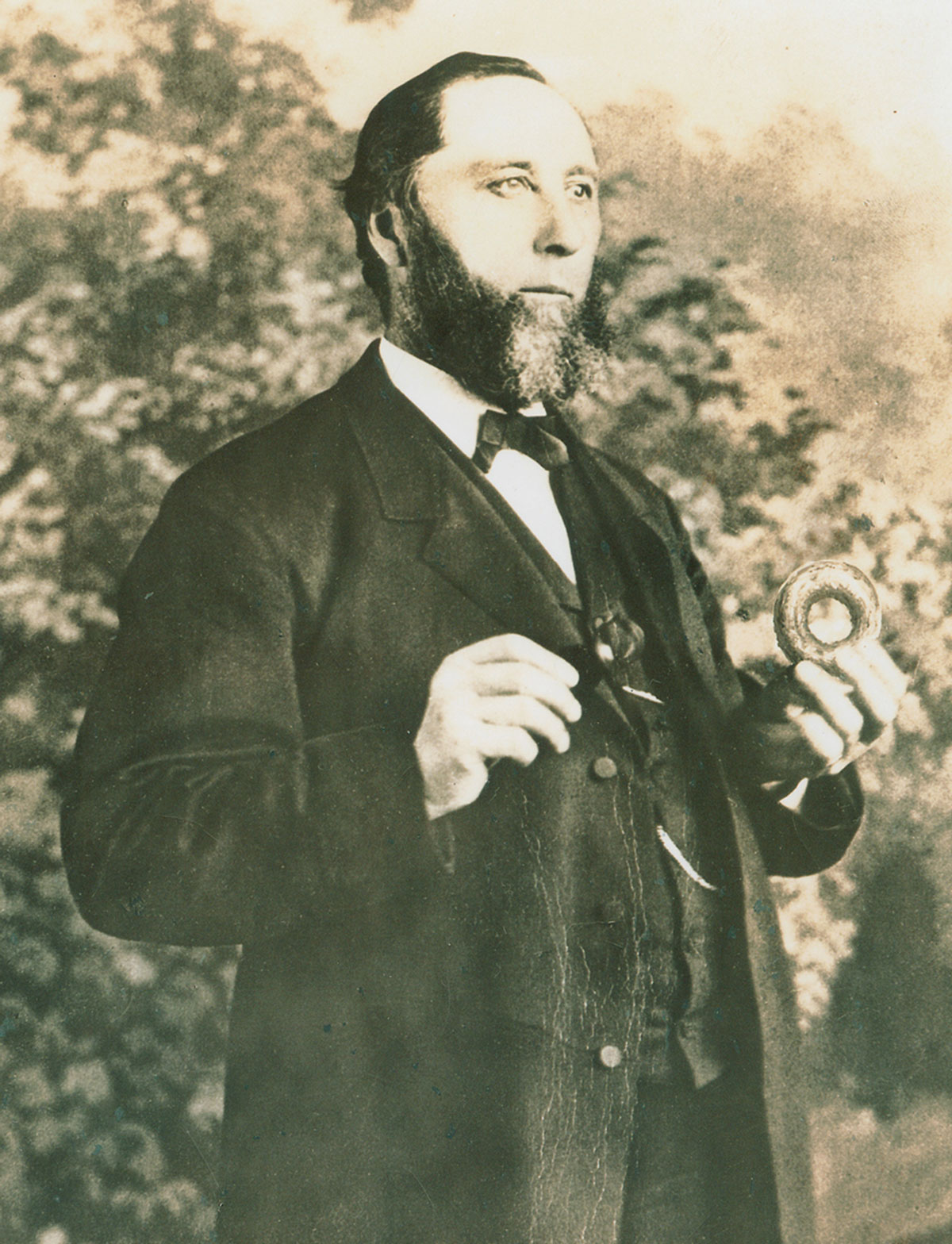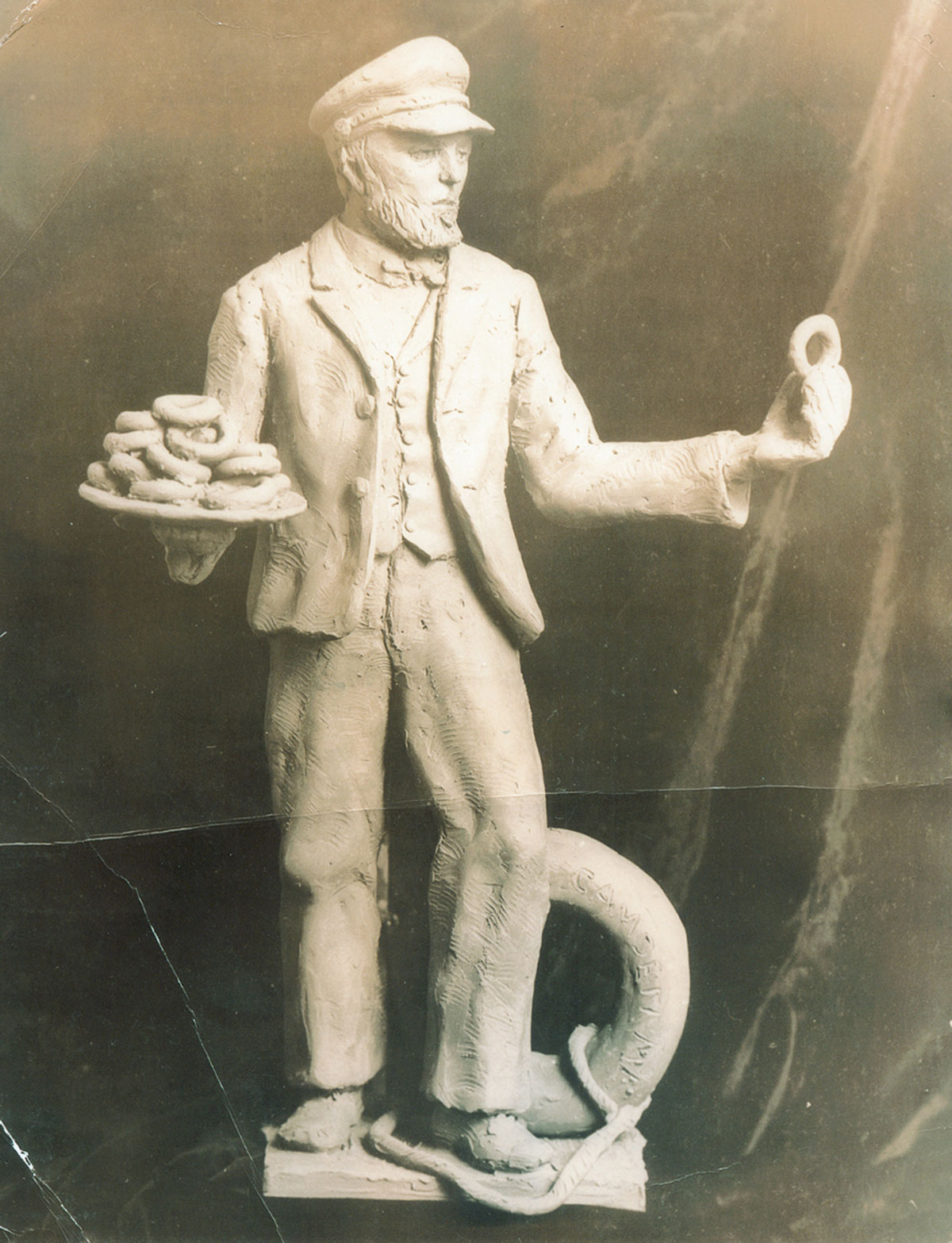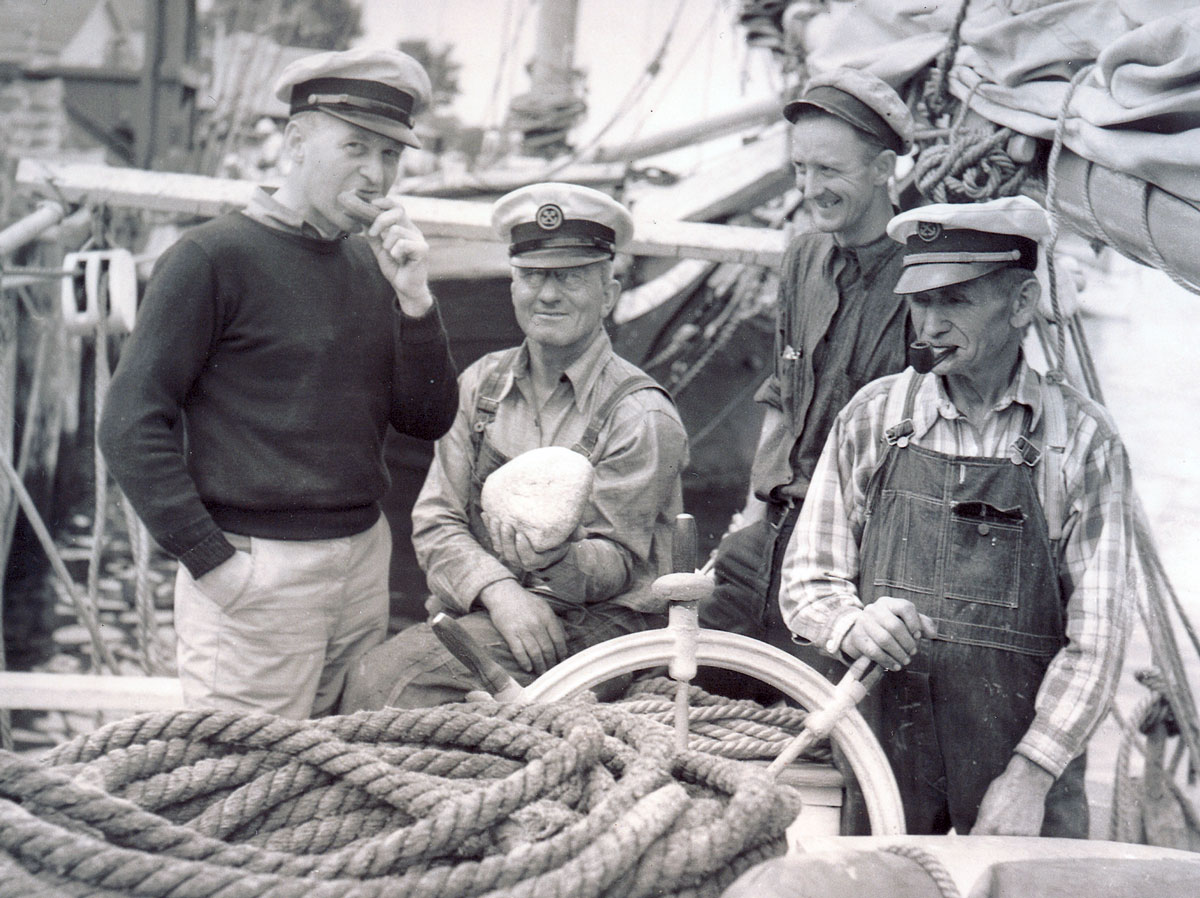Artist Project / Metempsydoughsis
Who put the hole in the donut?
Declan Clarke

The doughnut: a renowned pastry produced, consumed, and enjoyed around the world. Though many cultures produce sweet cakes consisting largely of fried dough, the American-style ring doughnut is perhaps the most common.
Its origins can be traced to 17th-century Dutch settlers who brought with them to New Amsterdam their penchant for olykoeks or “oily cakes”: large lumps of dough fried in pork fat. The doughnut seems to be a descendant of the olykoek. In Washington Irving’s The Legend of Sleepy Hollow (1819), Ichabod Crane arrives at Baltus van Tassel’s house to find “the ample charms of a Dutch country tea table” to include “the doughy dough nut, the tenderer olykoek, and the crisp and crumbling cruller.”
Indeed, as the Dutch settlers moved north up the coast to Maine, so too did the doughnut. Around the mid-19th century, it began to take on its now most familiar characteristic, that of the hole in its center.
In 1941, the American Donut Corporation sponsored the “Great Donut Debate” at the Astor Hotel in New York City. A panel of judges were asked to discern, “Who put the hole in the donut?”
There are a number of stories as to the origins of the doughnut hole, and there were two main contenders. Henry A. Ellis claimed the hole was created when a Nauset Indian shot an arrow through a pilgrim woman’s fried cakes. The woman fled, but on returning to the boiling vat, discovered the first ringed doughnut afloat on the surface.
Captain Hanson Crockett Gregory (1832–1921) was long believed to be the sole inventor of the doughnut hole by the people of Camden township, Maine. The area’s youngest-ever sea captain at 19, he sailed regularly from Camden seaport and though the “Great Donut Debate” judges ruled unanimously in his favor, there are a number of different stories as to how he came to put the hole in the doughnut.
One states that as a young boy Gregory overheard his mother complaining that she could never cook the center of her doughnuts completely to her satisfaction. Whereupon her young son suggested that she poke the center out, thus giving rise to the now famous hole.
A second story claims that after losing six crewmen who had fallen overboard but were unable to stay afloat because of an excess consumption of stodgy dough, Gregory ordered the cook to remove the center of each fried cake. This story was given further credence when rocklike objects were dredged from Camden harbor, and were found to be petrified doughnut remnants. Ringed doughnuts subsequently became known as “life preservers” by crewmen.


A third story states that while manning his ship on a particularly stormy night, Gregory was forced to spear his doughnut on the central spoke of the ship’s wheel to regain control. The wheel of his final vessel, The Donati, was found to have a considerable ring of grease around its spoke, leading many to believe this story to be the true origin of the doughnut hole.
By the 1940s, the doughnut had reached the peak of its popularity. The 1939–1940 World’s Fair proclaimed it “the food hit of the Century of Progress.” Exported back to Europe by the Salvation Army during both World Wars, US troops became known as “doughnut boys.” Back in Maine, a doughnut festival had been arranged in Gregory’s honor. Events included a pilgrimage to the Gregory homestead, and the coronation of a doughnut queen, Ellen Cooper.
It was around this time that plans for a statue to pay tribute to Gregory’s singular achievement were proposed. A local sculptor, Victor Kahill, made a model that was to be made into a 300-foot high bronze statue placed atop Mount Battie and lit at night so as to be visible 50 miles out to sea. In the end, a commemorative plaque was unveiled at the birthplace of Captain Gregory on 2 November 1947.
By the 1970s, the doughnut, with its popularity in steep decline, had given way to another ringed doughy product—the bagel. Though a cream cheese bagel has over 450 calories and the doughnut an average of 300, the bagel usurped the doughnut as the breakfast of choice for most Americans, being deemed a healthier option.
Today in the Camden area of Maine, little is known of Gregory and his achievement. While local fish outlets abound, the only place to buy a Gregory-styled doughnut is at the local Dunkin’ Donuts outlet. Gregory’s homestead long gone, the plaque— located near a churchyard on a little used back road— is the sole remaining testament to his achievement.
The author wishes to thank Dotty Morales and Janet Lexow at the Camden Public Library, Camden, Maine.
Declan Clarke is an Irish-born artist who has been based in London since 1997. In the past two years he has completed a residency at IMMA, and has represented Ireland at the International Studio Program at P.S.1/MOMA. He has recently shown at the Swiss Institute, New York, and the Project, Dublin. He is currently working on a short history of dogs and empires.